

Do 17Z-2

The Dornier Do17Z was to be the definitive development
of the Do 17 series and was based on the M version and experience gained
in with earlier versions in combat usage. In this version the entire
forward fuselage was changed. The 17 series had always had rather
cramped crew quarters and on the Z version the roof was raised and fully
glazed. The bombardiers station was glazed with flat panels and the
lower part of the fuselage was bulged and extended aft to a point near
the leading edge of the wing, terminating in a position for a rearward
and down facing machine gun position. Additional gun locations were
added to the rear portion of the cockpit. The Z-1, which was first
produced near the end of 1938, was essentially the same air frame as the
M-1 apart from the new forward fuselage and performance remained the
same in spite of the increase in drag. It retained the good handling
characteristics of its predecessor but the additional crew member and
armament caused it to be under powered when carrying the maximum bomb
load and this was reduced to 1000 lb. The bomb load was restored in
early 1939 when the 17Z-2 equipped with engines with two stage
superchargers became available. The original bomb load of 2,205 lb.
could then be carried but at the cost of range. The 17Z-3 carried
automatic cameras in the entry hatch. The 17Z-4 was a field modification
to a dual control trainer and the 17Z-5 was fitted with flotation bags
and additional life saving equipment to make it suitable to long range
over water reconnaissance missions. The aircraft was said to be popular
with both flying and ground crews and was the most reliable of all the
Luftwaffe bombers but it lacked the bomb load of the He 111 and the
speed of the Ju 88 and production was terminated in the Summer of 1940.
The total number of Z's produced was around 500.
The Kit
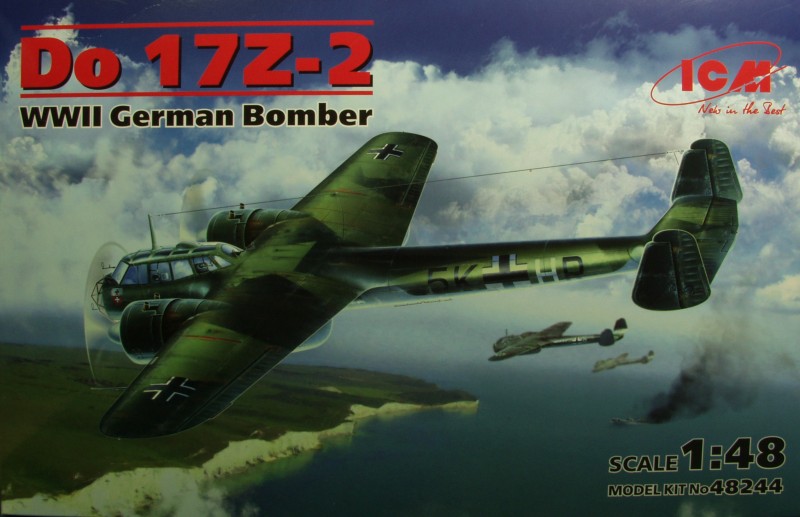
The ICM kit comes in a medium sized box with a
thin top cover that when removed reveals a hinged lid box made from
corrugated cardboard. Inside the box one finds a large recloseable
cellophane bag with all the sprues in it. The decals and instruction
sheet are in the bottom of the box. Inside the large bag the clear
parts are enclosed in a separate smaller resealable bag. Better than
just thrown in with the rest but one of the clear parts in my kit
had still broken loose from the sprue.
The parts are molded in a medium gray plastic. The surface is matte and smooth with some light flash on some parts. Surface detail consists of recessed panel lines. The panel lines are average in size. I found no major surface defects on the air frame parts.The cockpit interior parts mount into recesses in the fuselage walls and due to the thinness of the walls the recessed areas leave only a very thin amount of plastic. Thin enough to be able to see light through the wall. I'm not sure this will be a problem but I could see these bulging or melting through if too much glue is applied to the interior part. Like many limited run kits the sprue attachment points are a bit large on some parts, especially the smaller ones. The kit parts do have alignment pins for those who get nervous without them. Ejector pin marks have been kept out of sight for the most part but there are a couple in the cockpit area and in the gear wells that some will want to deal with. While this kit is very similar to the Do 215 kit only the clear sprue appears to be identical, the others, while similar have the parts arranged in a different manner. OK, lets look at the parts.
The first sprue has the fuselage halves, horizontal stabilizers, rudders, flight control surfaces, some internal bulkheads and bomb bay doors. Also on the sprue but not used on this kit is a nose and other parts for the night fighter version.
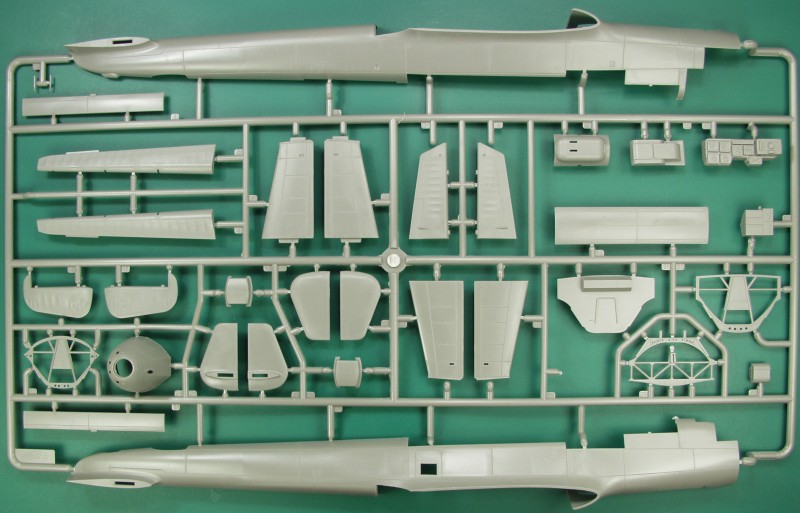
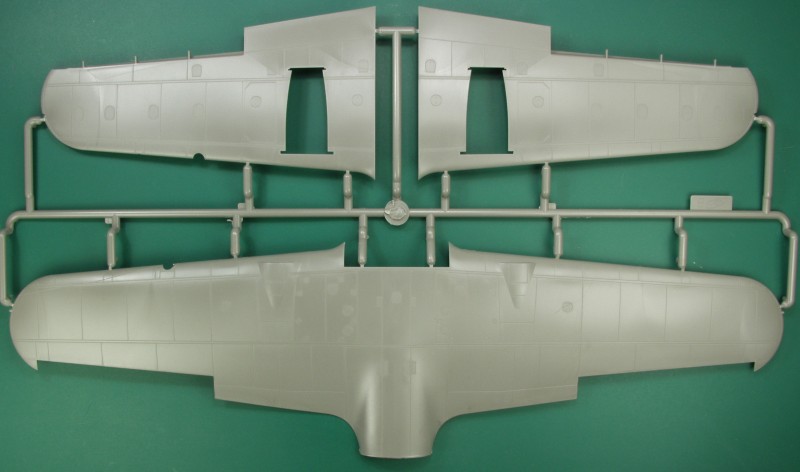
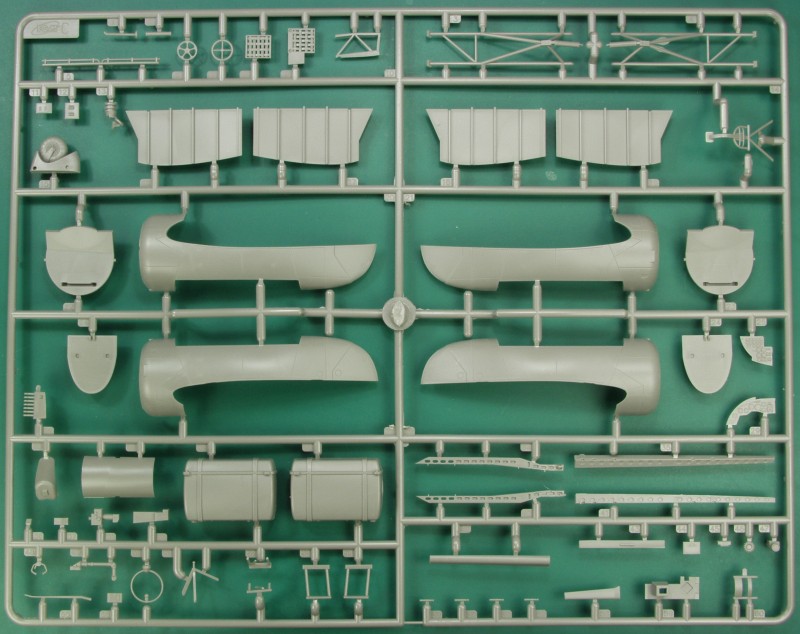
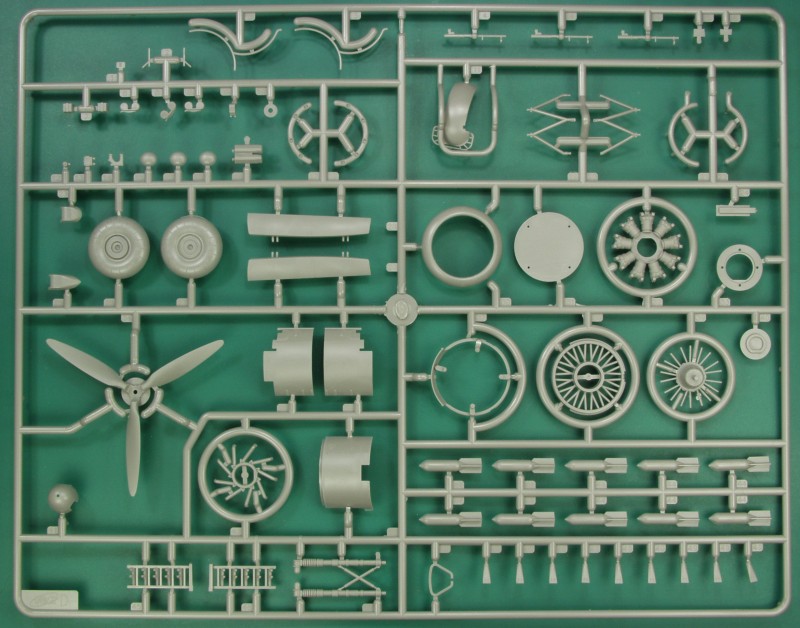
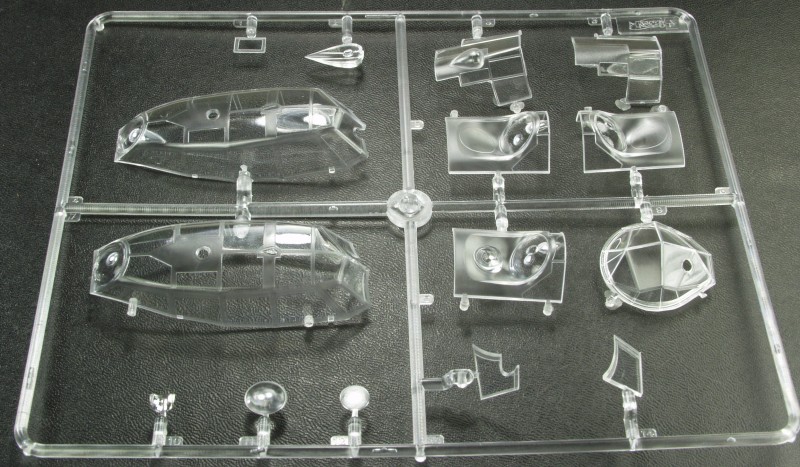
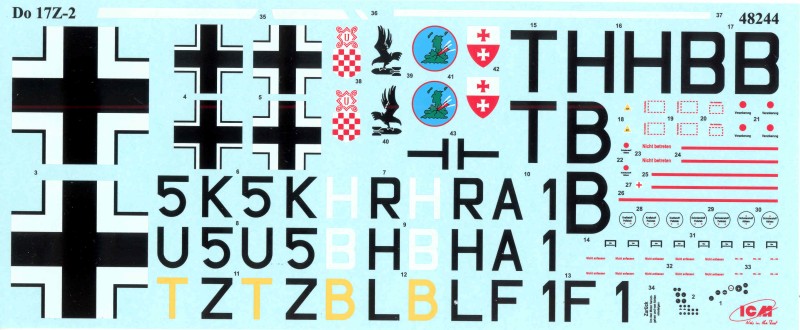
The instructions are in the form of a 20 page A4 sized booklet printed on thin glossy paper with nice cad style illustrations as shown in the 215 review here. They include a parts map, a paint chart with generic names and RLM numbers where applicable and Model Master numbers and the usual icon chart and safety warnings. The last three pages are in color and have painting and making information for the four aircraft covered by the decals.
After Market Goodies
Eduard
has PE sets both full and Zoom as well as a mask set. I felt
that the Zoom set provided all that I wanted and I will post a
photo when it is acquired.
Also acquired is a tail plane correction set from Vector (VDS48032) This corrects the portion of the rear fuselage that housed the elevator trim mechanism. It replaces the kits horizontal stabilizers with a one piece resin casting with separate elevators and provides the jacking gear cover that fits over it. The set provides also provides replacement tail wheel housing and tail wheel with separate wheel hubs and a tail wheel fork. The parts are all nicely molded as is usual with Vector. The set does require some cutting to install but is not that difficult. You can see the parts supplied in the photo below.
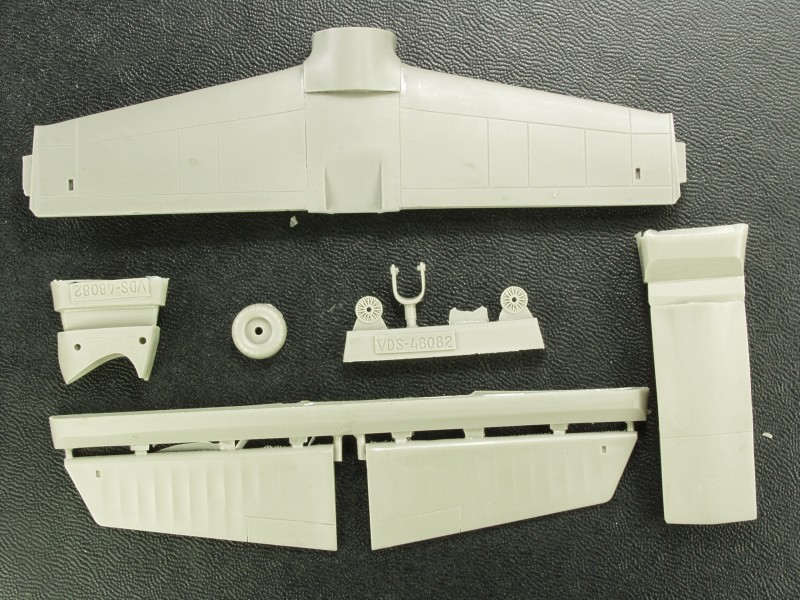
Conclusions
ICM
has come along way in the past few years and their Dornier series of
aircraft and their new Ju 88 series kits are a vast improvement over
their earlier kits. I have already built their Do 215 and was quite
pleased with the end result. It was not without some fit issues but
nothing serious. My build log for the Do 215 can be found here.
I'm looking forward to building this one. As good as the Classic
Airframes kit was this one is as well detailed if not more and is also
and easier build.
A review and build can be found here.
References
Warplanes of the Third Reich by William Green
AirDOC Photo Archive No. 3 Dornier Do 17 E-Z, Do 215B by Manfred Griehl
Dornier Do 17 by Edward Kocent-Zielinski
The Flying Pencil by Heinz J. Nowarra
Updated 7/31/18